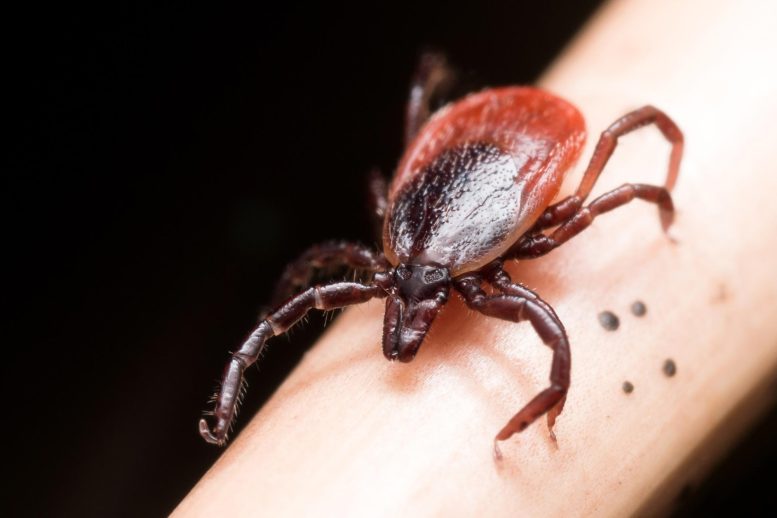
A new tick-borne infection, similar to Lyme disease, has been discovered in 18 patients in southern New England and nearby New York.
Similar to Lyme disease, a new tick-borne infection known as Borrelia miyamotoi has been discovered in people in the United States.
A new tick-borne infection that shares many similarities with Lyme disease has been discovered in 18 patients in southern New England and neighboring New York by researchers at the Yale Schools of Public Health and Medicine. The report is published in the January 17 issue of the New England Journal of Medicine.
It is the first time that the disease — so new that it does not yet have a name — has been confirmed in humans in the United States.
Blood tests were used to detect evidence of infection by a bacterium that is found in deer ticks and is related to the one that causes Lyme disease. The researchers found positive results for the new infection in 21 percent of 14 patients with unexplained summertime febrile illness, 3 percent of 273 patients with Lyme disease or suspected Lyme disease, and 1 percent of 584 healthy people living in areas where Lyme disease is endemic.
Yale scientists discovered the bacterium, known as Borrelia miyamotoi, in deer ticks from Connecticut more than a decade ago. In 2011, they published the first evidence of human infection in Russian patients. The current study was designed to determine whether human infection occurs in the United States.
“While many symptoms are similar to Lyme disease, patients also may experience other symptoms, such as relapsing fever,” said Dr. Peter Krause, senior research scientist at the School of Public Health and primary author of the study. Although blood tests for Lyme disease will not detect infection with the B. miyamotoi bacterium, antibiotic treatment should be the same as for Lyme disease, Krause said. All patients in the study were from the Northeast, but researchers believe cases may occur in other areas of the country where Lyme disease is endemic because the bacterium has been found in about 2 percent of all ticks that transmit Lyme disease
“This is the first time we have found an infectious organism carried by ticks before we have recognized the disease in humans,” said Durland Fish, professor of epidemiology at the School of Public Health and the study’s senior author. “We usually discover new diseases during an epidemic and then try to figure out what is causing it.” Fish and his Yale colleagues specialize in tick-borne diseases with an emphasis on environmental surveillance for ticks and tick-borne pathogens.
Reference: “Human Borrelia miyamotoi Infection in the United States” 17 January 2013, New England Journal of Medicine.
DOI: 10.1056/NEJMc1215469
Other authors of the study include Erol Fikrig, chief of infectious diseases at Yale School of Medicine; Sukanya Narasimhan, research scientist in infectious nts diseases at the Yale School of Medicine; Gary P. Wormser, at New York Medical College; and Alan G. Barbour, University of California, Irvine.









Be the first to comment on "Tick-Borne Infection Borrelia Miyamotoi Discovered in the United States"